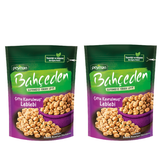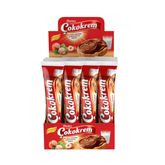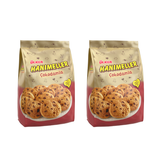Discover the Sweet Magic of Turkish Delight
Discover the Sweet Magic of Turkish Delight
Turkish Delight, or lokum, is a confection that has enchanted palates for centuries. This sweet treat, known for its delicate flavors and chewy texture, has a rich history and continues to captivate dessert enthusiasts worldwide.
A Glimpse into History
The origins of Turkish Delight trace back to the Ottoman Empire in the late 18th century. Hacı Bekir Effendi, a confectioner who arrived in Constantinople (now Istanbul) in 1776, is often credited with its invention. His creation quickly gained popularity, even earning him the title of the palace’s chief confectioner.
The confection gained international fame in the 19th century when an English traveler introduced it to Europe, coining the term "Turkish Delight." Its allure was further immortalized in C.S. Lewis's The Lion, the Witch, and the Wardrobe, where the sweet plays a pivotal role in the narrative.
The Art of Making Turkish Delight
Traditional Turkish Delight is crafted from a simple yet precise combination of sugar, water, and starch. This mixture is boiled to a specific consistency, then flavored and set into molds. Once cooled, it's cut into cubes and dusted with powdered sugar to prevent sticking.
The basic ingredients include:
-
Sugar
-
Water
-
Cornstarch
-
Flavorings (such as rosewater, lemon, or mastic)
-
Nuts (optional, like pistachios or hazelnuts)
The result is a soft, chewy candy that melts in the mouth, offering a subtle sweetness and aromatic flavor.
Exploring Flavor Varieties
Turkish Delight boasts a diverse range of flavors, catering to various palates:
-
Rose: The classic flavor, offering a floral and fragrant taste.
-
Lemon: Provides a zesty and refreshing citrus note.
-
Pomegranate: Adds a sweet and slightly tart flavor.
-
Mint: Delivers a cool and invigorating taste.
-
Pistachio: Combines the chewy texture with crunchy nuts.
-
Hazelnut: Offers a rich and nutty flavor profile.
-
Chocolate-Coated: A modern twist, enveloping the delight in a layer of chocolate.
These variations showcase the versatility of Turkish Delight, allowing for both traditional and innovative interpretations.
Cultural Significance and Modern Popularity
Beyond its delightful taste, Turkish Delight holds cultural importance in many regions. It's traditionally served during special occasions, holidays, and as a gesture of hospitality.
In recent years, Turkish Delight has experienced a resurgence in popularity, partly due to its appearance in popular media and its inclusion in holiday recipes. For instance, it's featured among nostalgic Christmas candy recipes, inviting families to recreate festive sweets reminiscent of childhood.
Savoring Turkish Delight Today
For those eager to experience authentic Turkish Delight, Tulumba.com offers a wide selection of traditional and modern varieties. From classic rose and lemon flavors to innovative chocolate-coated delights, Tulumba.com provides a convenient way to explore this confection's rich heritage and taste.
Turkish Delight is more than just a sweet treat; it's a confection steeped in history, culture, and tradition. Its enduring appeal lies in its delicate flavors, unique texture, and the sense of nostalgia it evokes. Whether you're revisiting a childhood favorite or discovering it for the first time, Turkish Delight offers a magical taste experience that transcends time and borders.














